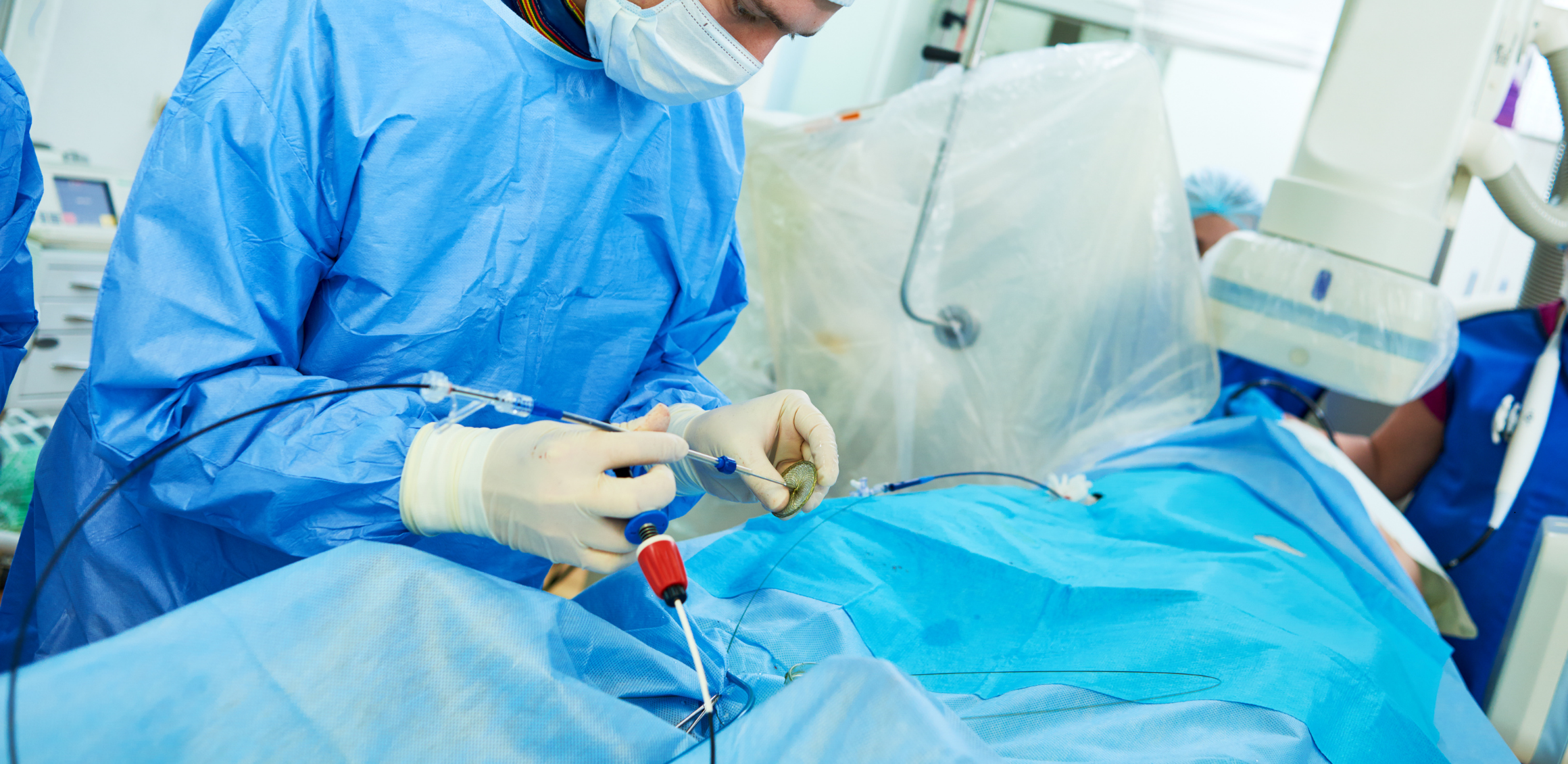- TAVI
- Tri-Klip
- Complex Coronary Interventions
- CTO Treatment (Chronic Total Occlusion)
- Balon Mitral Valvuloplasti
- Pulmonary Balloon Valvuloplasty
- Septal Ablation
- ASD (Atrial Septal Defect)
- Coronary Arteriovenous Fistula Closure
- Paravalvular Leak Closure
- Ablation Methods for Tachycardias
- Supraventricular Tachycardias
- Atrial Fibrillation
- Epikardial Ablation
- Stereotactic Radiosurgery
- Lead Extraction
- Device Implantations
- Pacemaker / ICD
- CRT / CRT-D Implantation
- Wireless Pacemakers
- Renal Denervation
- Non-Surgical Treatment of Aortic Aneurysms and Ballooning
- Cardioneural Modulation

CRT / CRT-D Implantation
Cardiac Resynchronization Therapy (CRT) and Cardiac Resynchronization Therapy with Defibrillator (CRT-D) are advanced devices used to manage heart failure and serious cardiac arrhythmias.
CRT / CRT-D Implantation
Cardiac Resynchronization Therapy (CRT) and Cardiac Resynchronization Therapy with Defibrillator (CRT-D) are advanced devices used to manage heart failure and serious cardiac arrhythmias. CRT ensures synchronized contraction of the heart’s ventricles, while CRT-D additionally includes a defibrillator function to correct life-threatening rapid heart rhythms.
CRT (Cardiac Resynchronization Therapy)
Function: CRT synchronizes the contractions of the left and right ventricles in patients with heart failure. This improves the heart’s pumping efficiency, reduces symptoms, and enhances quality of life.
Implantation Procedure:
- Preparation: The patient undergoes evaluation to determine suitability for CRT.
- Anesthesia: Typically, local anesthesia or sedation is administered.
- Placement of Leads: Three leads are inserted into the right atrium, right ventricle, and left ventricle. The lead to the left ventricle reaches the heart muscle via the coronary sinus.
- Device Placement: A pocket is created under the skin in the upper chest, where the CRT device is placed.
CRT-D (Cardiac Resynchronization Therapy with Defibrillator)
Function: CRT-D includes all functionalities of CRT and additionally features a defibrillator to detect and correct life-threatening heart rhythms such as ventricular tachycardia or fibrillation.
Implantation Procedure: Similar to CRT, but with the incorporation of defibrillator features. The procedure involves testing and programming the defibrillator function to ensure proper operation.
Advantages and Risks
Advantages:
- Management of Heart Failure: Improves symptoms and heart function.
- Enhanced Quality of Life: Enables patients to perform daily activities more comfortably.
- Life-Saving: Prevents sudden cardiac arrest by correcting dangerous heart rhythms.
- Minimal Invasive: Most procedures are minimally invasive, promoting faster recovery.
Risks:
- Infection: Risk of infection at the implantation site.
- Bleeding or Hematoma: Potential bleeding or hematoma at the implantation site.
- Lead Issues: Problems such as dislodgement or malfunction of leads.
- Device Malfunction: Rare risk of device malfunction.
- Incorrect Shocks: Possibility of inadvertent shocks from the CRT-D device.
Conclusion
CRT and CRT-D devices are crucial in managing heart failure and serious arrhythmias. They improve cardiac function, enhance quality of life, and can prevent sudden cardiac death. Successful implantation and follow-up care are essential for long-term efficacy. These advanced technologies represent significant advancements in the treatment of cardiac diseases within modern cardiology.
